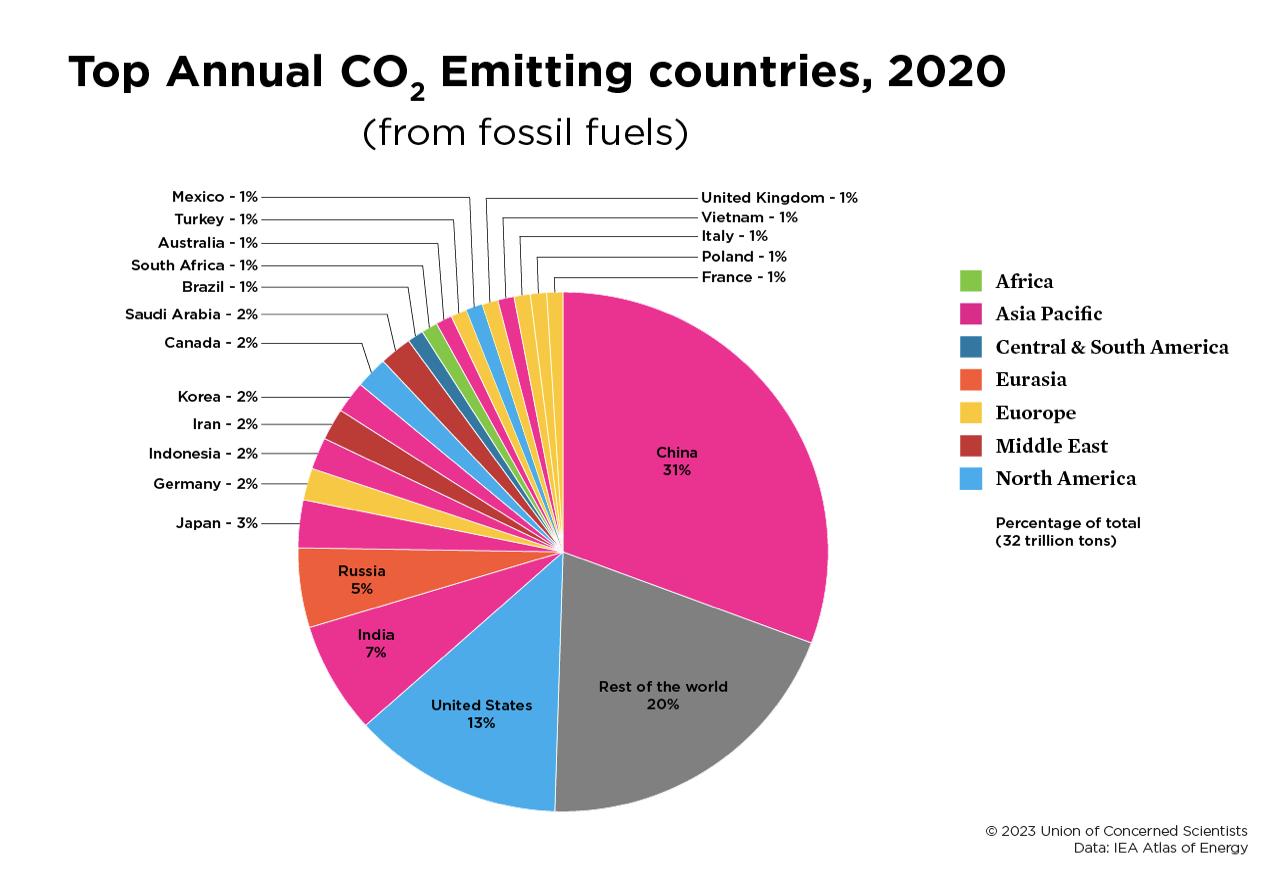SUS ABIL LITY
Sustainability in Ambulance Services
White Paper
August 2024

White Paper
August 2024
The Council of Ambulance Authorities (CAA)
2/141 Sir Donald Bradman Drive, Hilton South Australia 5033T: +61 423 950 100
E: admin@caa.net.auwww.caa.net.au
Copyright ©2024 CAA - All rights reserved. It is not legal to reproduce, duplicate, or transmit any part of this document in either electronic means or printed format. Recording of this publication is strictly prohibited.
Published by CAA
Dr. Shohreh Majd Policy & Research Manager
The Council of Ambulance Authorities Inc.
Sustainability in healthcare and ambulance services refers to the implementation of sustainable practices that reduce the negative impact of these sectors on the environment.
Sustainable practices focus on reducing energy and water consumption, reducing waste generation, sustainable transport, promoting environmentally responsible procurement, and reducing greenhouse gas emissions.
In addition to the health impacts of environmental degradation, there is also a growing recognition of the economic and social costs of environmental damage. Climate change, for example, is expected to have significant impacts on the Australian economy, particularly in the areas of agriculture, tourism, and infrastructure. The need for sustainable environmental policy is becoming more pressing as the global community recognises the urgency of addressing these issues.
The implementation of sustainable practices in emergency services faces several challenges. These challenges include the lack of awareness and understanding of sustainable practices, the cost of implementing such practices, and the lack of regulatory incentives to promote them. However, there are several opportunities for implementing sustainable practices, including the potential cost savings from energy and water efficiency measures, the positive public image associated with sustainable practices, and the potential for encouragement and recognition.
The Council of Ambulance Authorities (CAA) is taking a proactive approach to sustainability, recognising the importance of reducing the environmental impact of ambulance services while maintaining high standards of patient care. In this book, the CAA is aiming to develop a comprehensive strategy for achieving this goal.
By Dr. Shohreh Majd
Embarking on the journey of crafting “Sustainability in Ambulance Service” has been an extraordinary learning adventure, filled with insights, challenges, and growth.
In this profound endeavour, I owe a debt of gratitude to Mojca Bizjak-Mikic and David Waters, whose expertise and guidance have been invaluable, beacons lighting the path to a more sustainable future in ambulance services. The dedicated efforts and thoughtful feedback from the entire team at the Council of Ambulance Authorities have made this journey both enriching and fulfilling.
To the unsung heroes in ambulance services, your tireless commitment to saving lives is awe-inspiring. This book serves as a testament to the passion and resilience you bring to the crucial work of promoting sustainability in the ambulance services; saving our planet, the same way as you save its habitants.
As I reflect on the collaborative efforts that have shaped this book, I am reminded of the profound impact that individuals and organisations can make when united by a common goal. This learning journey has been transformative, and I am sincerely grateful to all who have played a part in it.

Sustainability, as a concept, contains a complex and multifaceted web of interrelated dimensions, namely economics, society, and the environment.
Sustainability represents a holistic approach to development that seeks to address the challenges and dilemmas posed by the simultaneous pursuit of economic growth, social wellbeing, and environmental preservation.
At its core, sustainability strives to fulfill present societal needs while ensuring the preservation of resources and conditions necessary for future generations to meet their own needs.
The concept of sustainability finds its embodiment in the framework of sustainable development, which aims to achieve a delicate equilibrium among economic progress, social advancement, and environmental stewardship. This pursuit recognises the inherent interconnectedness and interdependence of these dimensions, understanding that actions taken in one realm inevitably impact the others. As such, sustainable development adopts a comprehensive and long-term perspective, acknowledging that short-sighted approaches can have detrimental consequences for both current and future generations.
Transition to Sustainable Energy Sources
Restricting Non-Renewable Resource Consumption
Preservation of Ecosystem Health
Preventing Irreversible Ecosystem Damage
Minimise Environmental Pollution
Recognising the Health and Environmental Impacts of Pollution
Prioritise Wellbeing over Economic Growth
Prioritising Economic and Social Wellbeing Metrics Over GDP
Future-Focused Decision Making
Long-Term Oriented Economic Decision Making
Sustainability is not just an environmental issue, but also a social and economic one. Environmental degradation has significant social and economic impacts. Some examples are loss of biodiversity, depletion of natural resources, and climate change. In this sense, sustainable development aims to address these issues by promoting economic growth that is environmentally safe and socially equitable. This involves the adoption of sustainable production and consumption patterns, the preservation of biodiversity and ecosystems, and the promotion of social inclusion and equity.
A systemic approach to sustainability calls for integrated decision-making processes, where the impacts and trade-offs of various actions are carefully evaluated across economic, social, and environmental dimensions.
It requires understanding that pursuing narrow objectives in isolation may lead to unintended consequences and compromises in other areas. Therefore, sustainable development necessitates a comprehensive assessment of the potential synergies and trade-offs between different goals, as well as a recognition of the importance of long-term planning and adaptability.
Ultimately, sustainability signifies a transformative journey towards a future where human activities are aligned with the capacity of the planet to support them. Only through embracing a broader perspective society, can we strive towards a more equitable, prosperous, and resilient future, where the needs of present and future generations are met without compromising the health and vitality of our ecosystems and the wellbeing of individuals and communities.
Temperature Surge
• Intense thermal conditions
• Extreme atmospheric events
Intensified Climatic Conditions
• Airborne pollutants
• Shifts in vector habitats
Sea Level Elevation
• Elevated allergen levels
• Water quality deterioration
Heightened CO2 Emissions
• Impacts on water and food resources
• Deterioration of ecosystems
In the year 1983, a pivotal moment in global environmental governance unfolded as the United Nations General Assembly took a significant stride by adopting Resolution 38/161 titled “Process of Preparation of the Environmental Perspective to the Year 2000 and Beyond.”
This landmark resolution laid the foundation for a specialised commission tasked with multifaceted responsibilities aimed at shaping long-term environmental strategies, fostering international cooperation, and addressing the intricate interplay between development, resources, and the environment.
The primary objectives set by the resolution included:
a. Proposing enduring environmental strategies for sustainable development beyond the year 2000.
b. Recommending ways to translate environmental concerns into enhanced cooperation, particularly among developing countries and those at different stages of economic and social development.
c. Deliberating on how the international community could more effectively handle environmental issues considering the commission’s broader recommendations.
d. Assisting in the articulation of shared perceptions regarding long-term environmental challenges and delineating an agenda for action over the coming decades, encompassing aspirational goals for global collaboration.
The commission, later formalised as the “World Commission on Environment and Development” (WCED), gained widespread recognition under the stewardship of its chair, Gro Harlem Brundtland.
A distinguished medical doctor and advocate for public health, Brundtland had previously served as Norway’s Minister for Environmental Affairs and held the post of Prime Minister during three distinct periods.
Comprising twenty-one members from diverse global backgrounds, with half representing developing nations, the WCED conducted fact-finding activities to assess the state of the global environment. Beyond data analysis, the commission embarked on a series of fifteen meetings held in various cities worldwide. These gatherings aimed to glean experiences, providing insights into how humanity interacts with the environment.
The culmination of the WCED’s efforts materialised in the issuance of its seminal report, “Our Common Future,” in 1987. This report, often referred to as the Brundtland Report, underscored the interconnectedness of environmental, economic, and social challenges, establishing sustainable development as a guiding principle for the global community. The report’s primary and frequently cited definition characterises sustainable development as “... the kind of development that caters to current requirements without jeopardising the capacity of succeeding generations to fulfill their own needs.”
Throughout the report, the terms ‘sustainable development’, ‘sustainable’, and ‘sustainability’ are utilised interchangeably, underscoring the intricate interrelations among social justice, economic vitality, and environmental wellbeing.
The international community continued its commitment to addressing environmental concerns. In December 1997, the Kyoto Protocol was adopted as an international treaty under the United Nations Framework Convention on Climate Change (UNFCCC). Under the Kyoto Protocol, developed nations, termed Annex I parties, committed to binding targets, pledging to reduce their greenhouse gas emissions by an average of 5.2% below 1990 levels during the initial commitment period spanning from 2008 to 2012.
The agreement introduced innovative flexibility mechanisms, encompassing emissions trading, the Clean Development Mechanism (CDM), and Joint Implementation (JI), enabling countries to fulfill their reduction commitments more economically.
An important feature of the protocol was the establishment of the ‘Adaptation Fund’, designed to provide support for developing countries grappling with the adverse effects of climate change.
On February 16, 2005, the Kyoto Protocol entered into force following ratification by countries representing 55% of global greenhouse gas emissions.
Fast forward to 2015, the international community witnessed another landmark development—the adoption of the Paris Agreement during the 21st Conference of the Parties (COP 21) to the UNFCCC in Paris.
Departing from the fixed targets of its predecessor, the Paris Agreement embraced a more inclusive and adaptable approach. At its core, the Paris Agreement empowered participating nations to determine their own Nationally Determined Contributions (NDCs), allowing for a flexible response to the unique circumstances of each country. The agreement set a bold objective—to limit the global temperature increase to well below 2 degrees Celsius above pre-industrial levels, with a further aspiration to cap it at 1.5 degrees Celsius.
In addition to these commitments, the Paris Agreement outlined a financial support mechanism, obligating developed nations to provide financial assistance to developing countries for both mitigation and adaptation efforts. The Paris Agreement entered into force on November 4, 2016. A framework for transparency and accountability was also established, necessitating regular reporting by countries on their emissions and progress in implementing their NDCs.
Human consumption patterns exert a profound influence on the environment, and within this complex relationship, the rebound effect emerges as a significant factor shaping the overall impact.
The transition from agrarian societies to industrialised economies has witnessed a surge in the consumption of goods and services, extending beyond basic needs to encompass social status and identity. Globalisation has further propelled the spread of consumption-oriented lifestyles, resulting in a global homogenisation of consumption patterns marked by increased demand for energy-intensive products, fast fashion, and electronic gadgets.
Illustration of Rebound Effects
The rebound effect, also known as Jevons Paradox, was first articulated by economist William Stanley Jevons in the 19th century. This paradox posits that improvements in resource efficiency may paradoxically lead to increased overall resource consumption. In essence, the cost savings resulting from efficiency gains make the consumption of the resource more economically attractive, prompting individuals or industries to use more of it.
The interconnectedness of human consumption patterns and the rebound effect bears profound environmental consequences.
As efficiency gains fail to translate into absolute reductions in resource use, the anticipated benefits from these advancements are compromised and many environmental impacts arise from this dynamic interplay.
Increased demand for goods and services exerts immense pressure on finite natural resources. From fossil fuels to minerals and water, the extraction and utilisation of these resources contribute to habitat destruction, biodiversity loss, and ecosystem degradation. The rebound effect exacerbates the strain on ecosystems by nullifying the expected resource savings from efficiency improvements. When the rebound effect leads to increased energy consumption, efforts to reduce greenhouse gas emissions face challenges.
Despite improvements in energy efficiency, increased usage may occur if cost savings make energy-intensive activities more affordable. This poses a significant obstacle to global climate goals, perpetuating reliance on fossil fuels and contributing to carbon dioxide emissions. Rampant consumerism also results in the generation of substantial amounts of waste.
The production, consumption, and disposal of goods contribute to air and water pollution, soil contamination, and the accumulation of non-biodegradable materials in ecosystems. The rebound effect intensifies this issue by fostering a cycle of increased consumption, leading to higher levels of waste, and contributing to environmental degradation.
As the world collaborates to improve healthcare systems on a global scale, a concerning truth has surfaced, and that is a clear possibility of adverse health effects resulting from the pollution and environmental shifts caused by the healthcare sector’s influence.
This realisation features the urgent necessity to mitigate such effects imposed by the healthcare industry on the environment and to promote sustainability within its operations. Achieving this imperative objective, demands a multifaceted approach that encompasses various key dimensions.
To address these challenges posed by the environmental impact of the healthcare sector, a comprehensive curriculum has been designed by Monash University. This curriculum ensures that participants gain a deep understanding of the intricacies surrounding the environmental impact of the healthcare sector, while providing them with the knowledge and skills necessary to implement sustainable practices, advocate for environmentally conscious policies, and contribute to the ongoing global efforts aimed at creating a more ecologically responsible healthcare system.
This foundational module explores the intricate relationship between healthcare activities, environmental changes, and resultant health outcomes. Drawing upon principles of environmental epidemiology, participants engage in an in-depth exploration of empirical evidence linking healthcare-related pollution and environmental alterations to specific health hazards. Understanding these connections forms the basis for subsequent modules, providing a scientific framework to comprehend the intricacies of the healthcare sector’s environmental impact.

A pivotal aspect of sustainable healthcare practices is elucidated in this module through an examination of Life Cycle Assessment (LCA) methodologies applied to healthcare systems. Participants gain insights into the quantification of environmental burdens associated with the entire life cycle of healthcare services, from resource extraction to waste disposal. This scientific approach aids in identifying key hotspots for intervention and informs strategies for minimising the overall ecological footprint of healthcare activities.
This module focuses on the integration of cutting-edge, environmentally conscious technologies within healthcare operations. Participants explore the latest innovations, such as energy-efficient medical equipment, sustainable building materials, and eco-friendly waste management systems. Emphasising the adoption of green technologies, this module provides a scientific understanding of how technological advancements can be harnessed to mitigate the environmental impact of healthcare practices.
An in-depth analysis of policy frameworks governing sustainable healthcare practices is the focus of this module. Participants examine regulatory standards, economic incentives, and accreditation programs that foster environmentally responsible healthcare operations. This scientific exploration encompasses a comparative analysis of international policies, elucidating the need for harmonised global standards to address the transboundary nature of environmental challenges associated with healthcare activities.
This module delves into the scientific principles of resource efficiency within healthcare facilities. Participants critically evaluate the design, construction, and operational practices of healthcare infrastructure to optimise resource utilisation. From energy-efficient building design to sustainable procurement practices, the module provides a comprehensive understanding of how resource efficiency can be scientifically integrated into healthcare facility management.

The scientific intricacies of waste management in healthcare are explored in this Module. Participants examine the life cycle of healthcare waste, from generation to disposal, with a focus on adopting circular economy principles. This module provides a scientific foundation for the development of sustainable waste management strategies, encompassing recycling, reusing, and reducing waste within healthcare contexts.
Recognising the pivotal role of human behaviour in sustainable healthcare practices, this module delves into the scientific underpinnings of behavioural change strategies and stakeholder engagement. Participants explore theories from psychology and sociology to understand how attitudes and behaviours can be positively influenced. Module 7 emphasises the importance of engaging healthcare professionals, policymakers, and the broader community in fostering a collective commitment to sustainable practices.
One crucial aspect in addressing the environmental impact of the healthcare sector is the implementation of proper strategies.
One example is such strategy in waste management practices. Such strategy covers a range of activities including efficient waste segregation, recycling, and disposal techniques, where healthcare facilities can significantly minimise the release of harmful substances into the environment, reducing pollution and subsequent health risks. Another critical element of such strategy involves optimisation of energy and water use within healthcare facilities, which is vital for minimising carbon emissions and conserving valuable resources.
Social, Environmental, and Economic, in addition to Systems Sustainability in the context of healthcare.
The adoption of such strategy and engaging energy-efficient technologies, renewable energy sources, and water-saving strategies, healthcare facilities will be able to significantly reduce their ecological footprint.
Proper strategies, which could be implemented in this area are countless. Sustainable procurement practices are another example that plays a pivotal role in the journey toward a greener healthcare sector. Prioritising environmentally friendly and socially responsible suppliers, assist healthcare institutions to contribute to the development and adoption of sustainable products and services. Some areas can be sourcing materials with minimal environmental impact, such as recyclable or biodegradable packaging, as well as promoting fair labour practices throughout the supply chain.
Education and awareness initiatives are equally essential in embracing a sustainable healthcare sector. This includes promoting responsible resource use, waste reduction, and environmentally conscious behaviours. Healthcare institutions can engage in knowledge sharing and collaboration with other stakeholders to foster innovation and exchange best practices in sustainable healthcare.
The pursuit of sustainability in the healthcare sector necessitates active collaboration among various stakeholders, including healthcare providers, policymakers, researchers, and the community.
These entities can work together to develop and implement sustainable practices, policies, and regulations. Healthcare providers implement green technologies and optimise resource use, while policymakers craft regulations to mandate environmental responsibility. Researchers contribute evidence-based insights, and community engagement raises awareness and advocacy. Such collaborative efforts can drive systemic change, ensuring that sustainability is embedded within the core operations of healthcare facilities and the broader healthcare system.
Proactive steps toward sustainability are not only imperative for protecting the environment but are also evidence to the healthcare sector’s commitment to delivering care that aligns with the principles of environmental stewardship and social responsibility. The transition to a greener and healthier future demands the unwavering dedication and collective action of the healthcare sector, as it plays a crucial role in safeguarding the wellbeing of individuals and communities worldwide.

Climate change and environmental degradation have emerged as two of the most pressing challenges of the twenty first century.
Over the last era, human activities have significantly altered the planet’s natural systems, resulting in profound and far-reaching impacts on the environment.
In a few decades the Earth witnessed unprecedented levels of human-induced climate change. The burning of fossil fuels, deforestation, industrial activities, and other human activities have resulted in the emission of greenhouse gases such as carbon dioxide, methane, and nitrous oxide into the atmosphere. These changes pose serious dangers to the planet’s ecosystems, biodiversity, and human societies. The consequences of climate change and environmental degradation are already evident, and if left unchecked, they have the potential to escalate into an impending crisis with severe implications for the future of our planet.(1)
One of the most significant impacts of climate change is the alteration of natural ecosystems. Climate change has led to a rapid increase in global temperature. This warming trend is primarily attributed to the increased concentrations of greenhouse gases in the atmosphere.
Elevated temperatures affect ecosystems by influencing the behaviour and distribution of plant and animal species. Species that are unable to adapt or migrate may face increased risks of extinction. Numerous studies have highlighted the initiation of this tragic trend, indicating that South America faces the highest extinction risk at 23%, followed by Australia and New Zealand (14%), Asia (9%), Europe (6%), and North America (5%).(2)
Climate change disrupts traditional precipitation patterns, leading to altered rainfall and snowfall regimes. Some regions experience more intense and frequent rainfall, while others face prolonged droughts. This variability in precipitation affects the water availability for plants and animals, impacting their growth, reproduction, and overall survival. It also contributes to changes in the distribution of species and the composition of ecosystems.
The warming of the planet has led to the melting of glaciers and ice caps, contributing to rising sea levels.
This poses a significant threat to coastal ecosystems and low-lying areas.
Coastal habitats, such as mangroves, salt marshes, and coral reefs, are particularly vulnerable. Rising sea levels can lead to increased salinity in estuarine ecosystems, affecting the species that inhabit these areas.
Impacts of climate change on the future of biodiversity

Source: Bellard, Céline, Cleo Bertelsmeier, Paul Leadley, Wilfried Thuiller and Franck Courchamp.
“Impacts of climate change on the future of biodiversity.” Ecology letters 15 4 (2012): 365-377 .
Climate change is associated with an increase in the frequency and intensity of extreme weather events, including hurricanes, droughts, floods, and wildfires.
These events can have immediate and long-term impacts on ecosystems. For example, wildfires can lead to the destruction of vegetation and habitats, while intense storms can cause coastal erosion and disrupt marine ecosystems.
The key effects of climate change on natural ecosystems are the disruption of delicate ecological balances. Many plant and animal species have evolved to thrive within specific temperature ranges, and even slight shifts in these ranges can have far-reaching consequences. Warmer temperatures can lead to shifts in the distribution of plant and animal species as they move to higher latitudes or altitudes in search of suitable habitats. This can result in the displacement of native species, loss of biodiversity, and changes in species interactions, such as predator-prey relationships and pollination patterns.
Rising temperatures also impact the timing of biological events, such as the timing of flowering, migration, and reproduction. In the context of warmer temperatures causing an earlier arrival of spring, some species may struggle to adjust their life cycles accordingly. This adjustment challenge can result in a mismatch between species that rely on each other for survival, like plants and their pollinators or predators and their prey. These disruptions in timing can have cascading effects throughout the ecosystem, affecting the abundance and distribution of species and potentially leading to population declines or even extinctions.
Hypothetical relationship between vertical seed dispersal and fruiting season

(a) Vertical seed dispersal toward the mountain tops by mammals that are following the spring-to-summer plant phenology. Spring-to-summer plant phenology proceeds from the foot to the mountaintops. Midway through the season, fruits are no longer available at low altitudes, ripe fruits are available at middle altitudes, and fruits are not yet ripe at high altitudes.
(b) Hypothetical vertical seed dispersal toward the foot of the mountains by mammals that are following the autumn-to-winter plant phenology. The autumn-to-winter plant phenology proceeds from the top to the foot of mountains. Midway through the season, fruits are no longer available at high altitudes, ripe fruits are available at middle altitudes, and fruits are not yet ripe at low altitudes.
Source: Naoe, S. et al., (2019). Scientific reports, 9(1), 14932.
Elevated temperatures and altered precipitation patterns have triggered transformations in both plant and animal populations, prompting shifts in habitat distribution and disruptions in ecological dynamics.
These changes present formidable challenges for many species attempting to navigate an increasingly unpredictable environment, ultimately contributing to the decline of biodiversity and the collapse of ecosystems. Particularly vulnerable ecosystems, such as coral reefs, mangroves, and polar regions, face substantial hurdles due to climate change.
In the case of coral reefs, the heightened ocean temperatures induce widespread mortality among coral communities, posing grave consequences for marine biodiversity. The escalating sea temperatures and ocean acidification, fuelled by heightened atmospheric carbon dioxide levels, manifest in recurrent coral bleaching events, culminating in the demise of coral reefs and the critical habitats they provide for a myriad of marine species.
Climate Change has Contributed to a Series of Bleaching Events at the Great Barrier Reef, the World’s Largest Coral Reef System


Similarly, melting polar ice caps threaten the survival of iconic species like polar bears and disrupt the delicate food webs that sustain life in these regions. Furthermore, altered precipitation patterns and increased frequency of extreme weather events, such as droughts, floods, and storms, can have severe impacts on ecosystems. Droughts can lead to water scarcity, affecting freshwater ecosystems and reducing the availability of water for plants and animals. Floods can disrupt habitats and cause soil erosion, leading to the loss of fertile land.
These extreme events can also increase the spread of diseases and invasive species, further destabilising ecosystems. The alteration of natural ecosystems due to climate change not only poses a threat to biodiversity but also has significant implications for human societies.(3)
Ecosystems provide essential services, such as water purification, pollination, climate regulation, and nutrient cycling, which are vital for human wellbeing and economic activities such as agriculture and tourism. Disruptions to these ecosystem services can have far-reaching consequences, including food and water shortages, increased vulnerability to natural disasters, and economic losses.
The ecosystems themselves carry the heavy burden of this change through their interconnections with the non-living environments as well as each other.(4) The risk of species extinction and losing biodiversity increases in parallel with every degree increase of the earth temperature.(5)
Environmental damage has already reached a critical level. The significant increase in accumulated heat by more than 1-degree Celsius increase compared with pre-industrial era (1880-1900), is expected to rise even more by midcentury(6), by 2-degree Celsius. The high mountains of Asia have already witnessed a melting in their glaciers 2–3 times faster than 20th century.(7)

These extreme weather events result in the loss of lives, property damage, disruption of food and water supplies, and displacement of communities. Vulnerable populations, including low-income communities, indigenous peoples, and marginalised groups, are disproportionately affected, exacerbating existing social inequalities and injustices.
In addition to climate change, environmental degradation such as deforestation and pollution of air, water, and soil are some of the critical issues affecting the environment. Deforestation, particularly in tropical regions, has led to the loss of critical carbon sinks, disrupted water cycles, and destroyed habitats for countless species.


*Based on data and findings from satellite imagery and trade flow analysis. Source: WWF

Pollution of air, water, and soil has detrimental effects on human health and wildlife, leading to respiratory diseases, water contamination, and soil degradation. The impacts of climate change and environmental degradation are not limited to environmental and ecological consequences; they also have significant economic and social implications.
Change in Surface Temperature from Present (˚C).

Model-simulated global temperature anomalies for the Last Glacial Maximum (21,000 years ago), the mid-Holocene (6,000 years ago), and projection for 2071–2095. Source: World Bank
The costs associated with climate change, including damage from extreme weather events, loss of infrastructure, increased healthcare expenses, and disruptions to economic activities, are projected to be staggering.
The World Bank estimates that climate change could push over 100 million people into poverty by 2030, exacerbating existing inequalities and threatening the achievement of the United Nations Sustainable Development Goals.
Agriculture: the Main Sectoral Driver Explaining Higher Poverty Due to Climate Change.
Agriculture is the main sectoral driver explaining higher poverty due to climate change (Summary of climate change impacts on the number of people living below the extreme poverty threshold, by driver)
Prosperity scenario (high impact)
Prosperity scenario (low impact)
Poverty scenario (high impact)
Poverty scenario (low impact)
Additional people (million) below the extreme poverty threshold by 2030 Agriculture Health Labor productivity Disasters
Source: Rozenberg and Hallegatte, forthcoming.
Climate change impacts on the number of people living below the extreme poverty threshold, by driver.
Source: The World Bank; Climate change may push 100 million people back into poverty by 2030 - SEARCA KC3
Furthermore, climate change and environmental degradation have implications for human security and conflict. As natural resources become scarcer, competition for access to water, land, and other resources is expected to intensify, leading to conflicts over these resources. All these massive changes in our planet’s environmental conditions have created a big concern around the proper assessment of human impact on the local and global ecosystems. If this impact is not reversed or at least reduced, the future generations are on the verge of confronting environmental degradation.
Transboundary institutions mediate resource rivalry (Section 12.6)
grabs exacerbate land tenure conflicts (Section 12.5)
resettlement can disrupt identity and livelihood (Section 12.4) Climate stresses lead to involuntary abandonment of settlements (Section 12.4) Education for women enhances food security (Section 12.2) Income loss reduces mobility for low income pastoralists (Section 12.2)
Outcome of intervention
Intervention with net increase in human security
Intervention with net decrease in human security
Source: Md A, Gomes C, Dias JM, Cerdà A. Exploring gender and climate change nexus, and empowering women in the south western coastal region of Bangladesh for adaptation and mitigation. Climate. 2022 Nov 7;10(11):172.

Over the past two centuries, there has been a significant shift in the primary sources of energy, leading to rapid economic growth and profound changes to the Earth’s environment.
The adoption of concentrated energy sources like coal, oil, natural gas, and uranium has fuelled industrialisation and technological advancements, but their extensive utilisation has also had profound consequences for our planet.(8)
San Francisco, USA




Seoul, South Korea




“Industrial
Prior to this era, traditional energy sources like wood, biomass, and hydropower were the dominant means of meeting energy needs. However, with the discovery and harnessing of concentrated energy sources, the world experienced a significant transformation.
Coal: One of the primary energy sources of the 19th and early 20th centuries, coal played a vital role in powering steam engines, locomotives, and factories. Its widespread use led to economic growth and urbanisation in regions such as Europe and North America.(9)
Oil: The 20th century witnessed a rapid increase in the consumption of oil, primarily due to its versatility and higher energy density compared to coal. Oil-powered transportation, machinery, and the petrochemical industry became integral components of global economies, propelling industrialisation, and economic development.(9)
Natural Gas: Natural gas emerged as a prominent energy source in the latter half of the 20th century. It gained popularity due to its cleaner combustion properties and versatility in power generation, industrial processes, and residential use.(10)
Uranium: Nuclear power generation utilising uranium became a significant energy source in the mid20th century. Its ability to produce massive amounts of electricity without greenhouse gas emissions made it an attractive alternative to fossil fuels. However, concerns regarding waste disposal and the risk of accidents associated with nuclear power have limited its expansion.(11)
The economic and technological advances over the last 200 years have transformed how we produce and consume energy. Here’s how the global energy mix has evolved since 1800.

Source: Vaclav Smil (2017), BP Statistical Review of World Energy via Our World in Data
The increasing trend of human’s dependence on unsustainable finite resources of fossil fuels, is the main reason of environmental pollution.
Trapping heat in the earth’s atmosphere because of greenhouse gases emission like carbon dioxide largely contributes to increasing the temperature all around the world.(12) Reducing the impact of these energy sources in many areas such as wastes and emissions while securing the energy supply to the world population remained unchanged have turned to big challenges of energy providing sectors.(13) The need of using renewable sources of energy to mitigate climate change and address the energy demand of future generations is now being sensed more than ever.

Chapter 2:
The exponential increase in the consumption of concentrated energy sources has resulted in profound environmental consequences, fundamentally transforming the Earth in multiple ways.
The combustion of coal, oil, and natural gas releases greenhouse gases (GHG), primarily composed of carbon dioxide (CO2), nitrogen oxide (N2O), and methane (CH4),(15) into the atmosphere. These emissions contribute to the greenhouse effect, ultimately causing global warming and climate change.(14) The impact of GHG emissions on Earth has reached an alarming intensity, with detrimental consequences for our planet’s climate, a phenomenon known as the “Carbon Footprint”.

Cassia R, Nocioni M, Correa-Aragunde N, Lamattina L. Climate change and the impact of greenhouse gasses: CO2 and NO, friends and foes of plant oxidative stress. Frontiers in plant science. 2018 Mar 1;9:331669.
Under normal circumstances, the natural regulation of carbon movement between the atmosphere and the land and oceans is primarily facilitated by photosynthesis, during which plants absorb CO2. However, the excessive production of CO2 surpasses the capacity of natural processes to remove carbon from the atmosphere.(16) Another significant greenhouse gas (GHG), N2O, not only contributes to the formation of smog and acid rain but also exacerbates global warming. In fact, the impact of 1 pound of N2O on atmospheric warming is nearly 300 times that of 1 pound of CO2

The graph shows human-caused emissions over time for individual greenhouse gases. Carbon dioxide (CO2) from fossil fuel use and industry is the single largest contributor to total emissions at 64%, while CO2 from land use change and forestry accounts for 11% and methane (CH4) contributes 18%.
Source: Kikstra JS, Nicholls ZR, Smith CJ, Lewis J, Lamboll RD, Byers E, Sandstad M, Meinshausen M, Gidden MJ, Rogelj J, Kriegler E. The IPCC Sixth Assessment Report WGIII climate assessment of mitigation pathways: from emissions to global temperatures Geoscientific Model Development. 2022 Dec 20;15(24):9075-109.
The other member of GHG family, CH4, acts in the same way in capturing reradiated infrared waves from the Earth’s surface. This way they make a blanket insulating the Earth, absorbing energy, and slowing the rate at which heat leaves the planet. Therefore, long-term effects of GHG are extreme climate changes will present themselves as disastrous events such as heat waves, longer wildfire seasons, floods, droughts, and disruption of food chain. These serious impacts can still be avoided by adopting sustainability practices. The combustion of fossil fuels emits pollutants such as sulfur dioxide (SO2), nitrogen oxides (NO), and particulate matter. These pollutants contribute to air pollution, which has adverse effects on human health and ecosystems.(17)

Source: IEA Atlas of energy
Extraction, transportation, and processing of fossil fuels can lead to land and water pollution through spills, leaks, and accidents. Oil spills, for example, have devastating consequences for marine life and coastal ecosystems.(18) One notable example is the Deepwater Horizon oil spill in 2010, considered one of the largest environmental disasters in history. The offshore drilling rig experienced a catastrophic blowout, leading to the release of millions of barrels of crude oil into the Gulf of Mexico.
The spill had severe consequences for marine life and coastal ecosystems. Scientific studies conducted in the aftermath documented extensive damage to fish populations, marine habitats, and the overall biodiversity of the affected regions. Oil spills can have long-lasting effects on ecosystems, disrupting food chains, harming reproductive capabilities of marine organisms, and causing lingering environmental damage. The toxicity of spilled oil compounds can persist in sediments and affect marine life for years, leading to chronic ecological impacts.

Source: SkyTruth/Flickr
Moreover, spills are not isolated incidents. They underscore the broader environmental risks associated with the entire lifecycle of fossil fuels, from extraction to transportation and processing. These incidents highlight the urgent need for sustainable and environmentally friendly alternatives to mitigate the ecological toll of fossil fuel activities.